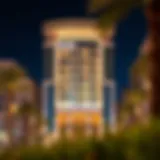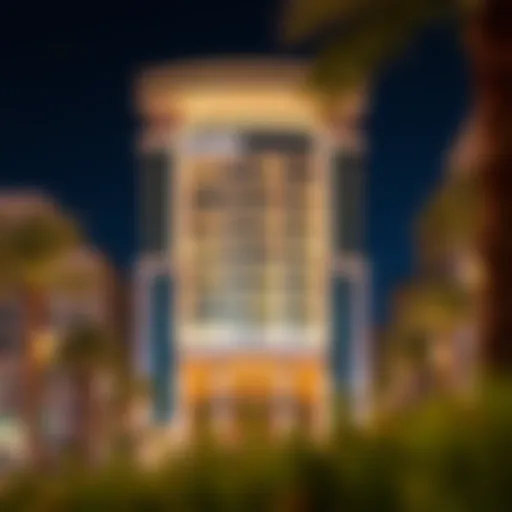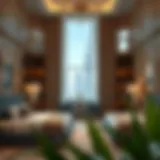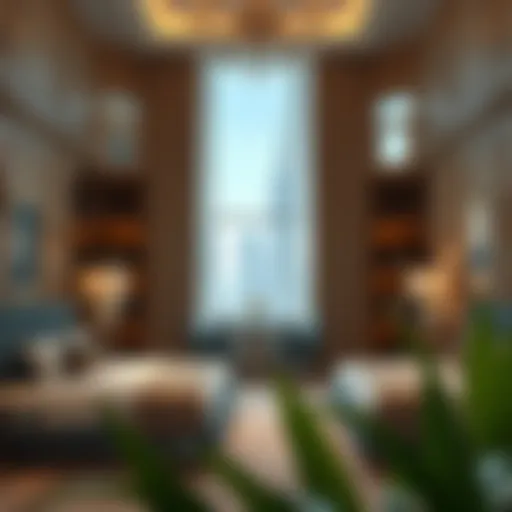Exploring the European Village Concept in Dubai
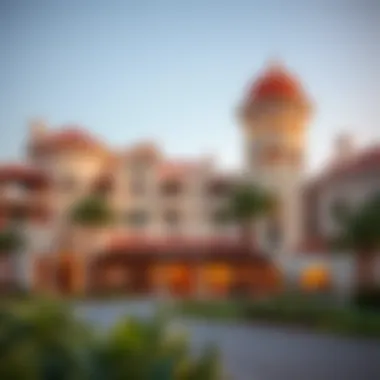
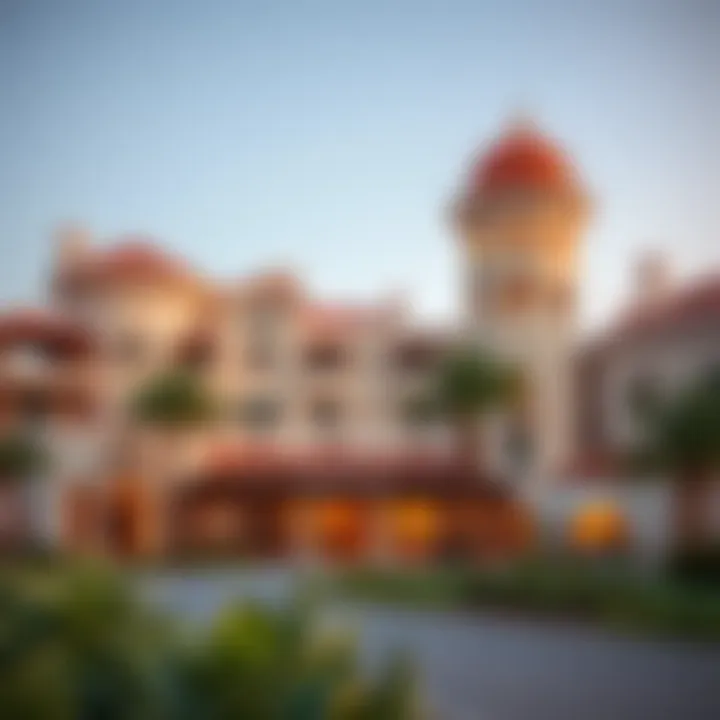
Intro
The European village concept in Dubai presents a unique blend of cultural richness and architectural innovation, embodying the charm of traditional European aesthetics while catering to modern living standards. This concept serves not just as a residential area but as a microcosm of diverse cultures coexisting harmoniously. It attracts not only locals looking for a slice of European lifestyle but also international investors searching for lucrative opportunities.
Situated in a burgeoning region of Dubai, the project echoes the beauty and intricacy found in various European villages rather than being a mere imitation. Its winding streets, green spaces, and vibrant community hubs offer an inviting atmosphere for families and individuals alike. The idea is not simply about mimicking Europe but rather adapting its essence into Dubai's dynamic landscape.
As we delve deeper into the market trends surrounding this innovative concept, it is vital to understand the current real estate environment and how it interlinks with the European village theme. This exploration will lend insights into why it remains appealing to both residents and investors, creating a newfound synergy in Dubai’s property market.
Market Trends
Current Real Estate Market Overview
Dubai's real estate market is as varied as its populace. Amid fluctuations and global trends, the European village concept stands out because it taps into a niche that many are beginning to recognize. The demand for lifestyle-oriented developments where community takes precedence over isolation has surged in recent years.
"Investors are increasingly looking for developments that offer not just a place to live, but a lifestyle experience."
In this context, the European village approach begins to flourish. Families and young professionals are drawn to environments that provide not only a home but also a connection to nature and a sense of belonging. In Q1 of 2023, there was noticeable growth in property transactions in areas favoring community-centric designs, signaling a shift in buyer priorities.
Emerging Neighborhoods and Investment Hotspots
As we explore neighborhoods around the European village idea, several areas have started gaining momentum among buyers and investors:
- Jumeirah Village Circle (JVC): Known for its affordability and family-friendly layout, JVC has become a popular choice for those looking to invest in community-oriented properties. The mixed-use developments here often reflect European architectural influences.
- Dubai Hills Estate: Combining luxury with community living, this area features greenery and parks similar to the vibes found in European hamlets. It’s no wonder that investors see high potential for future gains here.
- Meydan City: With its expansive spaces and upscale offerings, this neighborhood aims at blending sport, leisure, and residential life, drawing parallels to well-known European lifestyle trends.
The European village concept seems to fit seamlessly into these emerging neighborhoods, promising investors a chance to capitalize on this shifting tide. The cultural nuances and architectural significances inherent in these designs only further enhance the potential for success.
Understanding these market dynamics is essential for potential buyers and investors. They must recognize not just the current trends but also anticipate future developments in this continually evolving landscape. The allure of the European village concept, underpinned by thoughtful architecture and vibrant communities, positions it favorably in Dubai’s expansive property scene.
Preface to the European Village in Dubai
The concept of a European village in Dubai marks a remarkable shift in urban design, blending European aesthetics with Middle Eastern vibrancy. As cities evolve, the charm of European architecture brings a new flavor to Dubai's bustling landscape. The European village concept serves as a bridge between cultures, aiming to create a community that resonates with both expatriates and locals alike.
Such developments promise more than just striking beauty. They embody a promising lifestyle, contributing to the allure of Dubai as a globally recognized hub. The European village stands as a testament to how architectural themes can transcend geographical boundaries, infusing Dubai with an eclectic vibe.
When we delve into this topic, it's crucial to understand the underlying factors driving this development:
- Cultural Appeal: The aesthetics of European villages evoke nostalgia and elegance, a stark contrast to the ultra-modern skyscrapers usually associated with Dubai. This creates a unique atmosphere that attracts residents looking for a distinct lifestyle.
- Investment Interests: With its unique features and the potential for high returns, real estate in the European village attracts both local and international investors. It presents an opportunity for those seeking to diversify their portfolios in a rapidly evolving market.
- Community Building: Beyond the physical aspects, this concept fosters a sense of belonging and community among residents. It encourages social interactions through communal spaces designed for shared experiences.
Thus, understanding the European village in Dubai isn't merely an architectural endeavor; it’s a deep dive into how urban spaces can reshape lifestyles, create investment opportunities, and promote cultural richness. Its emergence spells exciting prospects not only for present-day inhabitants but also for future urban planning and real estate development.
"Dubai’s European village is a cultural amalgamation, designed to be more than just a space; it’s about creating a community that thrives on diversity."
In the following sections, we will explore the historical roots, current developments, and future outlook on this intriguing venture, offering a comprehensive understanding of the European village concept in Dubai.
Historical Background of European Villages
Understanding the historical context of European villages sheds light on the sociocultural fabric that influences modern interpretations, such as the European Village in Dubai. This section delves into the essence of what defines a village in this sense, tracing the roots back to how architectural styles and rural community structures evolved in Europe.
Historically, European villages served as microcosms of broader societal norms and traditions, often reflecting and adapting to the changes in their surrounding environments. They encapsulate a specific lifestyle, entwined with agriculture, trade, and community engagements. In Dubai’s European Village, these elements are not merely decorative; they represent a deeper connection to heritage and identity.
One pivotal consideration is how historical European villages are often characterized by their quaint aesthetics and functionality. The emphasis on organic designs, cobblestone paths, and community centers mirrored the lifestyle of residents who valued closeness and accessibility. This attention to communal space can be seen in Dubai’s models, where courtyards and open areas encourage interactions among neighbors.
Influence of European Architecture
European architecture has long been a story of adaptation and inspiration. It reflects diverse cultural influences—from Romanesque to Gothic styles, encapsulating varying periods and their characteristic elements. The architectural motifs that can be identified in European villages often include timber framing, thatched roofs, and intricate stonework.
In Dubai, where modernity reigns supreme, the incorporation of these architectural styles transforms the skyline into a tapestry of varying influences. For instance, the use of arches that echo the Roman style not only provides aesthetic appeal but also serves functional purposes, such as cooling down spaces in the arid climate. Moreover, adding local materials mirrors how historical structures were sustainably built from the available resources.
This architectural dialogue between the past and the present is essential. It conjures memories while allowing new patrons to appreciate the vibrancy that such historical references bring into a contemporary setting.
Cultural Assimilation in Urban Design
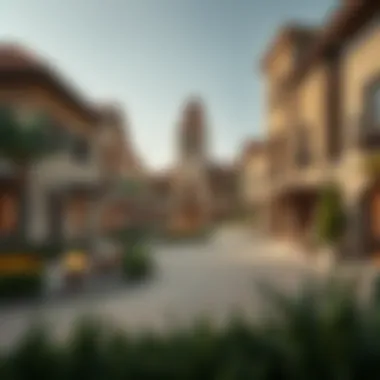
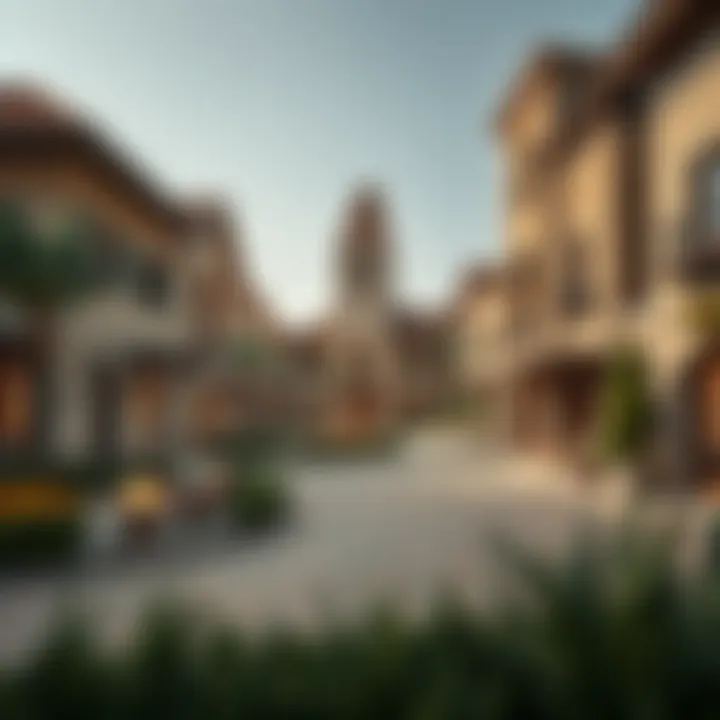
Cultural assimilation plays a critical role in how towns and villages develop, particularly in a global city like Dubai. As various cultures meet and interact, new blended lifestyles and architectural techniques emerge. This continual layering of cultural influences enriches urban design, making it diverse.
In the case of Dubai’s European Village, the blend is particularly poignant. It creates a fusion of traditional European lifestyles—marked by community-centric living—cultured within the UAE’s distinctive environment. Residents can experience the charm of European village life while also embracing Middle Eastern hospitality and warmth.
This holistic approach does not merely romanticize village life. It also acknowledges the practicality of merging different cultures, leading to a community that is not only functional but also enriching. For investors and stakeholders, this cultural symbiosis enhances the attractiveness of the project, presenting the village as a vibrant hub for both locals and expatriates alike.
"Cultural integration within urban designs fosters a sense of belonging, ensuring that a community can thrive while appreciating its roots."
In summary, understanding the historical backdrop of European villages provides invaluable insights into their modern iterations. Architectural influences combined with cultural assimilation create spaces that resonate with the essence of community living—a hallmark for success in today’s real estate landscape.
Current Developments in Dubai’s European Village
The European Village in Dubai is undergoing a fascinating transformation that reflects not just a melding of continents but also of cultures and lifestyles. Amidst a backdrop of rapid urbanization, this area serves as a microcosm for an evolving real estate landscape, paved with opportunities for both local and foreign investors. The significance of current developments within this unique enclave lies in its innovative approach to design and sustainability, shaping not only the aesthetic charm of the village but also its functional practicality.
Design and Aesthetic Considerations
When one walks through the European Village, they can immediately sense the careful thought given to its design. This place is not simply a collection of buildings but a thoughtfully curated environment where every street and square echoes the charm of European towns. The architectural influences draw heavily from classic European styles, yet there’s a fresh twist that incorporates the modern vibe often found in Dubai's aesthetic.
For instance, you might find a quaint replica of a Parisian café sitting alongside a villa styled like a Venetian manor. Such design synergies create a visual narrative that tells a story from different parts of Europe while still capturing the essence of Dubai's progressive nature.
In addition to visual appeal, form follows function in this development. The layout of the village promotes walkable spaces reminiscent of small European towns, merging lifestyle convenience with timeless architectural beauty. Plazas, parks, and communal areas break up the built environment, encouraging social interaction—a vital component of community living.
Sustainability Features
Sustainability is not just a buzzword; it’s becoming integral to the European Village's current developments. Emphasizing eco-friendly features, the projects are designed with a mind for both environmental and economic longevity. Energy-efficient appliances and smart home technologies are increasingly incorporated into properties, making them not only appealing but also cost-effective in the long run.
Furthermore, the village promotes green spaces and organic gardens, with many homes having access to outdoor areas that encourage gardening and sustainable living. Rather than just aesthetic uses, these gardens contribute to biodiversity, creating spaces where people can connect with nature amid urban charm.
This integrated approach to sustainability mirrors a broader recognition of environmental significance in urban planning. The developers have also implemented water-conserving techniques as part of landscape design, ensuring that the lush greenery thrives with minimal resource consumption.
In summary, the current developments in Dubai's European Village present a compelling case for investing in a place that balances charm with modern livability. The design considerations not only cater to the aesthetic desires of potential residents but also align with emerging trends in sustainable development. As the village continues to evolve, it will likely draw investors eager to be part of this unique real estate opportunity.
Architectural Highlights of the Village
The architectural highlights of the European Village in Dubai represent more than just buildings; they encapsulate a vision of community, culture, and aesthetics. This section reveals essential elements that make the architectural landscape of the village significant for both residents and potential investors. The styles chosen and the innovative design elements not only enhance the aesthetic appeal but also contribute positively to the community's identity and functionality.
Styles Represented
The European Village in Dubai showcases an impressive range of architectural styles that echo historical European designs, offering a sense of nostalgia blended with modern functionality. Different styles are often mixed, creating a rich tapestry that appeals to various tastes. Some of the most notable styles include:
- Mediterranean Charm: This style boasts terracotta rooftops, arched windows, and vibrant colors, providing a warm, inviting atmosphere reminiscent of the Mediterranean coast. Residents often find themselves drawn to this style due to its blend of rustic and refined aesthetics.
- Contemporary Minimalism: Modern elements are also prevalent, featuring clean lines and open spaces. This design not only maximizes natural light but fosters a sense of peace and tranquility.
- Cottage Influence: The quaint cottage-style homes, adorned with flower boxes and wooden beams, invite a sense of coziness. This style resonates with many looking for a homely feel amidst the urban setting of Dubai.
- Neo-Classical Elegance: Influenced by classic European architecture, structures designed in this style often incorporate columns, symmetry, and detailed embellishments. This adds a touch of grandeur to the village, attracting those with a taste for the extraordinary.
These diverse styles allow potential homeowners and investors to find spaces reflecting their personal or brand identity. The blend of aesthetics provides not merely a place to live or invest, but also a lifestyle choice that emphasizes comfort and community.
Innovative Elements in Design
Several innovative elements stand out in the architectural realm of Dubai's European Village, making it more than just a residential area. These features add value and convenience, aiming to improve residents’ quality of life:
- Sustainable Design Practices: Incorporating eco-friendly materials and energy-efficient designs are at the forefront of the village's architectural mission. Solar panels and rainwater harvesting systems are becoming commonplace, illustrating a commitment to sustainability.
- Smart Home Technologies: The integration of technology into the design means many homes feature smart home systems that enhance living experiences. Control over lighting, climate, and security from mobile devices not only appeals to tech-savvy residents but also ensures safety and convenience.
- Community Spaces: The blending of residential and communal spaces is another innovative concept embraced in the architectural design of the village. Parks, open-air markets, and collaborative workspaces are strategically placed, fostering interaction and community engagement.
- Adaptable Interiors: Many homes are designed with flexible spaces, allowing inhabitants to utilize areas as they see fit, from home offices to playrooms. This adaptability is especially appealing in the current climate where remote work is increasingly common.
"Architecture should speak of its time and place, but yearn for timelessness." – Frank Gehry
For further reading on architectural styles and advancements in sustainable design, check out Wikipedia's Architecture Section and related articles on Britannica.
Cultural Integration within the Village
Cultural integration stands as a cornerstone of the European Village concept in Dubai. This approach goes beyond mere architectural mimicry, as it seeks to blend the rich traditions of various European cultures with the unique mosaic of Dubai's local customs. The intermingling of these cultures leads to a vibrant community atmosphere, which not only enhances social interactions but also attracts a diverse range of residents and visitors.
The significance of cultural integration can be observed through multiple facets:
- Diverse Community: The European Village is home to a variety of cultural backgrounds, fostering an inclusive environment. This diversity encourages tolerance, understanding, and collaboration among residents.
- Cultural Enrichment: Residents and visitors can engage in various cultural practices, from traditional cooking classes to art exhibits. This exposure enables mutual understanding and appreciation of different lifestyles.
- Social Cohesion: As members of different backgrounds come together, they create a sense of belonging. Community engagement initiatives serve to strengthen relationships, whether through joint festivals or collaborative projects.
Ultimately, cultural integration within this village concept not only beautifies the residential landscape but also enhances the quality of life for its inhabitants.
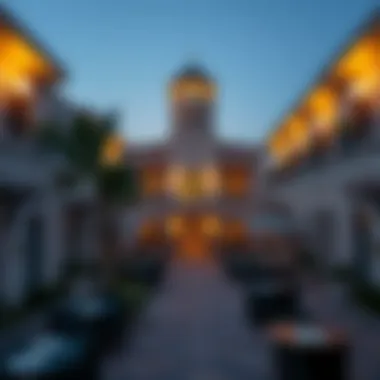
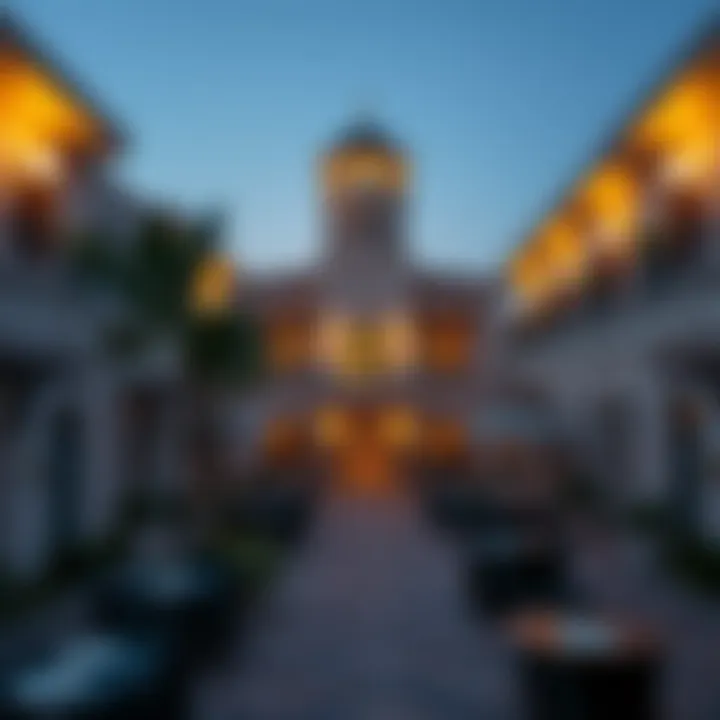
Community Activities and Events
Community life in the European Village is marked by a lively calendar of activities and events aimed at promoting engagement among residents. These activities foster a sense of belonging and are vital in building connections within the diverse population.
- Seasonal Festivals: Annual celebrations mark various cultural traditions, offering a platform for residents to share their customs. For example, a Spring Festival may showcase German music alongside Italian culinary delights, presenting a true cross-cultural experience.
- Sports Events: Regular sporting activities like football matches or community runs encourage teamwork and healthy competition among residents, fostering friendships beyond just neighbors.
- Workshops and Classes: These can encompass everything from language lessons to art workshops, providing residents opportunities to learn new skills while interacting with each other.
Engaging in community activities not only cultivates relationships but also serves to create a supportive environment where residents feel valued.
Cultural Exchange Programs
Cultural exchange programs play a crucial role in bridging the gap between different communities within the European Village. These initiatives pave the way for a deeper understanding of various cultures, fostering dialogue and collaboration.
- Local and International Collaboration: Programs that feature both local and international facilitators enrich the experience, allowing for a blend of ideas and practices. Residents may attend workshops that feature Spanish flamenco alongside classical Arabic music, creating a harmonious blend of experiences.
- Student and Volunteer Exchanges: Encouraging students and volunteers to participate in day-to-day activities can bring fresh perspectives into the community. Whether organizing a cultural fair or setting up a language exchange, the opportunities are truly vast.
- Cultural Presentations: Hosting events where individuals can present and share their heritage is valuable. These presentations can range from storytelling sessions to fashion shows, illustrating the vibrancy of cultures present in the village.
Overall, cultural exchange programs serve as an effective vehicle for engaging diverse populations, fostering a sense of unity, and promoting a multi-faceted cultural identity in Dubai's European Village, enhancing its appeal for transient residents and investors alike.
Real Estate Market Dynamics
When it comes to real estate, understanding market dynamics is crucial for anyone looking to invest in the European Village concept in Dubai. This area has not only captured the essence of European architecture but has also become a hotspot for investors, making it vital to grasp the trends and factors influencing its market.
Investment Trends in European Villages
The investment trends surrounding European Villages are quite telling of the shifting priorities within the Dubai property market. One cannot ignore the growing allure of these communities for both local and international buyers. Several factors contribute to this trend:
- Cultural Appeal: The European Village exudes a unique charm and ambiance that resonates with many, making it a desirable location for expatriates and locals alike. The blend of Western-style architecture with local culture creates an attractive living environment.
- Strategic Location: Proximity to essential amenities, like schools, hospitals, and leisure facilities, makes these villages appealing. Investors recognize the value of strategic location in enhancing property value over time.
- Diverse Offerings: From low-rise apartments to larger villas, the variety in property types caters to different budgets and lifestyle preferences, drawing a varied demographic.
Over the past few years, there's been a noticeable uptick in investment activity in the European Village area. Developers are responding to the demand by creating more modern living spaces that incorporate sustainable features.
Property Valuation Insights
Understanding property valuation in the context of European Villages can be a bit like solving a puzzle; you must consider various factors to get a complete picture.
- Market Comparisons: Properties here often outperform similar offerings in other regions of Dubai, thanks not only to their aesthetic appeal but also to the lifestyle they offer. Investors need to consider these comparative valuations when assessing potential investments.
- Future Appreciation: With a focus on sustainable development and urban landscaping, properties within the European Village are likely to appreciate over time. Investors can benefit immensely from this upward potential; it’s like planting a seed today that yields fruit tomorrow.
- Rental Value: Given the demand, rental yields in the European Village are promising. Investors looking for income-generating opportunities find this aspect particularly appealing, as it provides a steady cash flow while the property value appreciates.
"In real estate, it's not just about the bricks and mortar; it's about the community and the lifestyle that comes with it."
Demographic Appeal of the European Village
Understanding the demographic appeal of the European Village in Dubai is crucial for grasping why this unique residential concept is garnering such attention from diverse groups. It fuses local tradition with European charm, attracting potential residents and investors from various backgrounds. The European Village isn't just another housing project; it represents a lifestyle choice that resonates with different demographics, which is vital for its success.
Target Audiences and Residents
The target audience for the European Village spans a wide range: from expatriates who long for a slice of their home culture, to affluent locals looking for a community with a European flair.
- Families seek a welcoming environment where their children can grow and thrive, often favoring village-style living that emphasizes community and safety.
- Young professionals are drawn to the mix of leisure and amenities tailored to modern urban life, wanting both style and convenience.
- Retirees may find solace in the tranquil vibes reminiscent of a quaint European setting while enjoying the comfort of upscale facilities.
This blending of lifestyles creates a unique melting pot of experiences, making the village appealing to a wide audience. The European Village boasts amenities, culture, and social engagements that cater to different age groups, thereby fostering a sense of belonging.
Socioeconomic Considerations
When analyzing the socioeconomic dynamics of the European Village, various aspects come into play. Primarily, the pricing strategy positions it as a luxury development with a strong emphasis on quality of life.
- Affordable Luxury: While maintaining high standards, the development also offers various pricing tiers, making it accessible to some middle-income families, particularly expatriates, looking for elevated living standards without breaking the bank.
- Economic Growth: Dubai's continuing economic expansion contributes significantly to the attractiveness of such developments. People are flocking to this bustling city for job opportunities, which in turn elevates the real estate market.
The demographic appeal is not just about who lives in the European Village; it also pertains to the overall community engagement, with programs aimed at fostering interaction among residents. This communal approach can enhance property values and neighborhood satisfaction, making it a wise investment for prospective buyers.
The European Village serves as a bridge between traditional living and modern urbanity, shaping an inclusive community that speaks to diverse residents and potential investors alike.
Comparative Analysis with Other Residential Areas
The European Village in Dubai stands out not just for its unique architectural style or cultural nuances, but also for its distinctiveness when placed beside other residential areas in the region. Conducting a comparative analysis sheds light on the elements that make this village concept an appealing choice for various stakeholders, including investors and potential residents. Understanding the advantages it holds against both traditional villages and luxury developments provides invaluable insights for keen observers and actors in the real estate market.
Distinct Features Compared to Traditional Villages
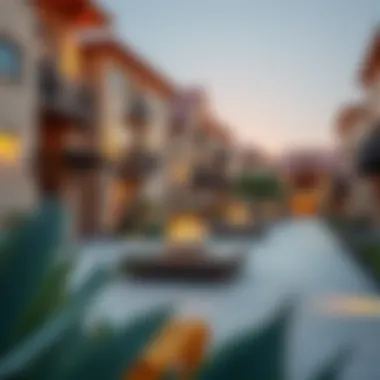
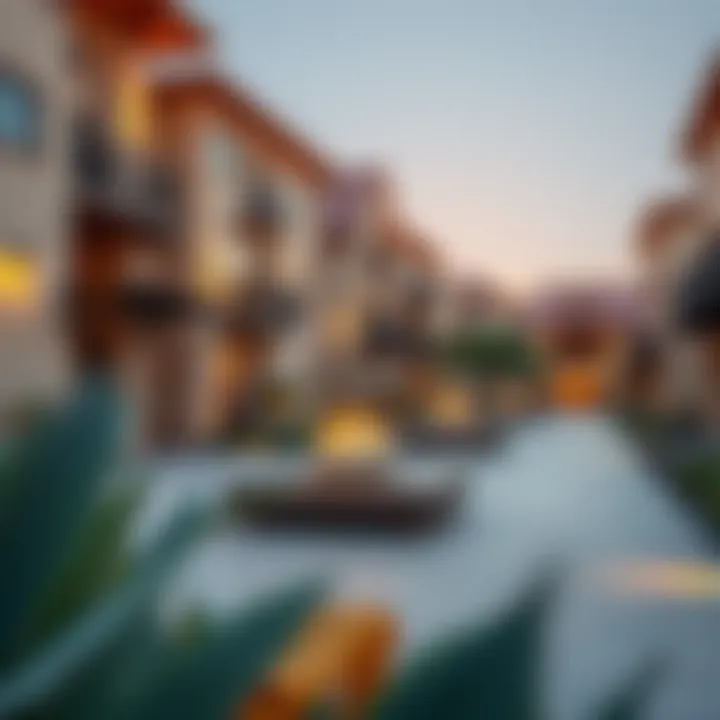
When comparing the European Village with traditional village setups, one can't overlook important differences in design philosophy and lifestyle offerings. Traditional villages tend to center around community-centric features without a heavy emphasis on intricate architectural designs.
In contrast, the European Village is designed with an array of eclectic architectural styles inspired by various European cultures. This means that a walk through the village can feel like a Mediterranean getaway, showcasing elements from rustic Italian piers to charming French town squares. Factors to consider include:
- Architectural Variety: While traditional settings may adhere to local styles, the European Village boasts multiple influences, allowing for artistic expression and diversity in homes.
- Lifestyle Amenities: Traditional villages may prioritize utility over luxury; here, you find cafes, boutique shops, and recreational parks that promote a modern lifestyle.
- Cosmopolitan Atmosphere: The European Village attracts a diverse population, encouraging a blend of cultures that traditional areas might not offer.
Benchmarking Against Luxury Developments
In Dubai’s competitive real estate scenery, the European Village also invites scrutiny against high-end luxury developments, which often flaunt opulence and exclusivity. However, the European Village carves its own niche—one that combines elegance with accessibility. Here are vital benchmarking aspects to consider:
- Affordability: Luxury developments frequently come with exorbitant price tags, while the European Village aims to strike a balance by providing varied pricing options. This affordability doesn't compromise quality but rather broadens the target demographic.
- Community Feel: Unlike some glitzy luxury condos that may feel impersonal, the European Village is purposeful in fostering a sense of community through shared spaces that encourage social interaction.
- Sustainability Initiatives: Many luxury developments have started prioritizing sustainability, yet the European Village integrates sustainable practices deeply into its structural planning, representing a forward-thinking approach even in comparison to its pricier counterparts.
This blend of European charm with modern amenities and cultural diversity positions the European Village uniquely in Dubai's residential landscape.
Future Prospects for the European Village
The concept of the European Village in Dubai holds immense potential for future growth and development. As the urban landscape continuously evolves, investors and stakeholders are increasingly interested in understanding where this unique project may head in the years to come. The demand for distinctive, culturally rich living environments is on the rise, creating ripe opportunities for development.
Emerging Trends in Real Estate
In the contemporary real estate market, there are several trends reshaping investments in regions like the European Village.
- Sustainability Focus: More buyers are actively seeking properties that emphasize environmental responsibility. This trend has emerged strongly in the UAE, with projects implementing green building technologies. These homes not only reduce ecological footprints but also appeal to eco-conscious investors.
- Smart Home Integration: With the booming technology scene, smart home features are becoming essential. A well-connected European Village equipped with smart systems can attract tech-savvy buyers who desire modern conveniences that enhance their living experience.
- Cultural Experiences: High demand for property that encapsulates lifestyle experiences is evident. Residents are looking for neighborhoods that facilitate a rich tapestry of cultural exchanges, making the European Village's offerings particularly attractive.
"Understanding the emerging trends is vital for investors as they navigate the market to capitalize on future gains."
Vision for Development
The vision for future development in Dubai's European Village rests on a few key pillars:
- Enhanced Community Spaces: Future prospects highlight the necessity for communal areas that foster social interaction, such as parks, gardens, and gathering spaces. This essence of community not only promotes resident engagement but also increases property value.
- Mixed-Use Developments: The integration of residential areas with commercial and recreational spaces can stimulate economic growth while enriching the lifestyle of residents. Consequently, this approach can attract both local and international investments, drawing a diverse population.
- Infrastructure Improvements: Significant upgrades in transport and public facilities are planned around the European Village. Improved accessibility will undoubtedly enhance its appeal, making travel within and outside the area smoother.
- Brand Collaborations: Aligning with well-renowned brands can elevate the status of the European Village. Partnerships with luxury retailers and service providers can result in a desirable destination that merges shopping, dining, and residential living.
For further exploration of real estate trends, resources can be found at Wikipedia and Britannica.
Culmination
The European Village concept in Dubai stands out as a modern marvel that encapsulates not just architectural charm, but also profound cultural interactions and economic vitality. In wrapping up this exploration, it becomes evident that a few key elements set this location apart in the dynamic realm of real estate.
First, cultural integration plays a crucial role. The village does not merely replicate European aesthetics; it fosters a blend of traditions that resonate with both expatriates and locals. This cultural synergy creates an environment that welcomes various lifestyles, enhancing community cohesion. The inclusion of diverse cultural programs and events further enriches the social fabric of the village, offering residents a vibrant communal experience.
Second, the investment potential is remarkable. With Dubai's real estate market showcasing resilience and adaptability, the European Village presents appealing opportunities for investors. Understanding the neighborhood's dynamics, from property valuation trends to demand analytics, proves essential for stakeholders aiming to navigate this ever-evolving landscape. Such insights into the market underscore the viability of the European Village as an attractive investment.
Furthermore, the architectural innovation and aesthetic considerations cannot be overlooked. The design seamlessly marries functionality with artistic expression. Through the lens of sustainability, the European Village sets high standards, fostering eco-friendly practices while staying true to its European roots. The unique styles represented add to the allure, making it a hotspot for both residents and tourists alike.
In closing, the European Village in Dubai is not just another development on the map. It embodies a nuanced approach to living, where cultural elements, sustainable practices, and investment prospects intersect. As this concept continues to evolve, its implications for the broader real estate landscape become increasingly significant. Investors, agents, and potential residents alike should keep a keen eye on this thriving locale.
"Dubai’s European Village reflects a harmonious balance between tradition and modernity, setting a benchmark for future developments."
References and Further Reading
- For more insights on the architectural elements, you may find useful information on Wikipedia.
- Insights on the cultural aspects can be explored further at Britannica.
- For community feedback and discussions, check out Reddit.
- Also, consider visiting relevant governmental and educational domains like *.gov or *.edu.
This thorough overview ties together the significance and multifaceted nature of the European Village Concept, paving the way for future narratives surrounding its growth and evolution.
References and Further Reading
The exploration of the European Village concept in Dubai delves into a unique fusion of architecture, culture, and community living that is increasingly relevant in today's globalized world. To fully grasp the implications and nuances of this concept, it is crucial to consider relevant references and further reading. This not only deepens understanding but also contextualizes the information presented throughout the article.
Importance of References
References serve as the backbone of any analytical discourse, providing verification and legitimacy to the ideas presented. In the case of the European Village, they ground the theories regarding architectural influence, cultural assimilation, and community engagement in facts and studies. Considerations include:
- Providing historical context: References to past architectural movements and urban design principles highlight how European villages shaped the building blocks of the current development in Dubai.
- Cultural education: Sources like Britannica and Wikipedia offer insights into the cultures that inspire the village design, helping to elucidate the nuances that may escape attention.
- Investment insights: Economic analyses from real estate reports or governmental publications can clarify potential investment trends in the village area, a key concern for investors and buyers.
Benefits of Further Reading
Digging deeper into supplementary materials can illuminate various aspects of the European Village concept, enhancing the overall narrative. Some notable benefits include:
- Broader perspectives: Exploring articles, studies, or reports can unveil contrasting or supporting viewpoints that enrich the discussion.
- Informed decision-making: For investors, understanding market dynamics and demographic studies will provide clarity when considering investment opportunities and risks.
- Cultural appreciation: Further reading can foster a sense of appreciation for the intricacies of cultural integration, pivotal for understanding community dynamics within the village.
Some valuable resources to consider:
- European Architectural Influences
- Cultural Impact on Urban Life
- Dubai Real Estate Market Trends
- Community Building


